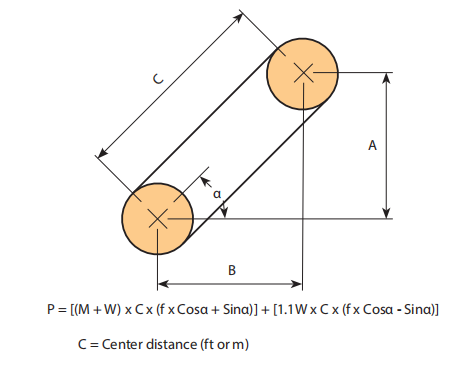Introduction
A cautious assessment with the problems surrounding a conveyor is critical for precise conveyor chain assortment. This segment discusses the fundamental considerations needed for prosperous conveyor chain assortment. Roller Chains are often applied for light to moderate duty materials handling applications. Environmental situations may well need the usage of unique elements, platings coatings, lubricants or even the ability to operate devoid of supplemental external lubrication.
Basic Information and facts Needed For Chain Variety
? Type of chain conveyor (unit or bulk) like the process of conveyance (attachments, buckets, through rods etc).
? Conveyor layout like sprocket places, inclines (if any) as well as number of chain strands (N) to get made use of.
? Amount of material (M in lbs/ft or kN/m) and sort of material to get conveyed.
? Estimated bodyweight of conveyor parts (W in lbs/ft or kN/m) which include chain, slats or attachments (if any).
? Linear chain velocity (S in ft/min or m/min).
? Environment during which the chain will operate which includes temperature, corrosion circumstance, lubrication issue etc.
Stage 1: Estimate Chain Stress
Utilize the formula under to estimate the conveyor Pull (Pest) after which the chain tension (Check). Pest = (M + W) x f x SF and
Test = Pest / N
f = Coefficient of Friction
SF = Velocity Component
Stage 2: Produce a Tentative Chain Variety
Applying the Test worth, produce a tentative variety by selecting a chain
whose rated doing work load greater than the calculated Check value.These values are acceptable for conveyor services and therefore are diff erent from those proven in tables with the front on the catalog that are linked to slow pace drive chain utilization.
Additionally to suffi cient load carrying capacity frequently these chains have to be of the sure pitch to accommodate a preferred attachment spacing. For instance if slats are for being bolted to an attachment every single one.5 inches, the pitch in the chain picked should divide into one.5?¡À. Hence 1 could use a forty chain (1/2?¡À pitch) with the attachments every 3rd, a 60 chain (3/4?¡À pitch) with the attachments every 2nd, a 120 chain (1-1/2?¡À pitch) together with the attachments every single pitch or maybe a C2060H chain (1-1/2?¡À pitch) using the attachments every single pitch.
Stage three: Finalize Selection – Calculate Real Conveyor Pull
Right after generating a tentative variety we need to confirm it by calculating
the real chain tension (T). To carry out this we will have to fi rst calculate the actual conveyor pull (P). Through the layouts  shown over the appropriate side of this page decide on the proper formula and calculate the complete conveyor pull. Note that some conveyors may be a blend of horizontal, inclined and vertical . . . in that situation calculate the conveyor Pull at just about every section and include them together.
shown over the appropriate side of this page decide on the proper formula and calculate the complete conveyor pull. Note that some conveyors may be a blend of horizontal, inclined and vertical . . . in that situation calculate the conveyor Pull at just about every section and include them together.
Step four: Calculate Highest Chain Tension
The maximum Chain Stress (T) equals the Conveyor Pull (P) as calculated in Phase 3 divided from the quantity of strands carrying the load (N), occasions the Speed Component (SF) shown in Table two, the Multi-Strand Factor (MSF) proven in Table three plus the Temperature Element (TF) shown in Table 4.
T = (P / N) x MSF x SF x TF
Stage 5: Examine the ?¡ãRated Doing work Load?¡À of the Selected Chain
The ?¡ãRated Functioning Load?¡À of your picked chain ought to be higher than the Maximum Chain Stress (T) calculated in Step four over. These values are suitable for conveyor service and therefore are diff erent from those shown in tables on the front on the catalog which are associated with slow velocity drive chain utilization.
Stage six: Test the ?¡ãAllowable Roller Load?¡À in the Picked Chain
For chains that roll within the chain rollers or on top rated roller attachments it’s needed to check the Allowable Roller Load?¡À.
Note: the Roller load is determined by:
Roller Load = Wr / Nr
Wr = The total bodyweight carried by the rollers
Nr = The quantity of rollers supporting the excess weight.